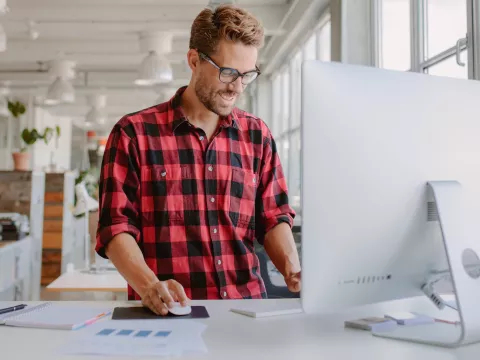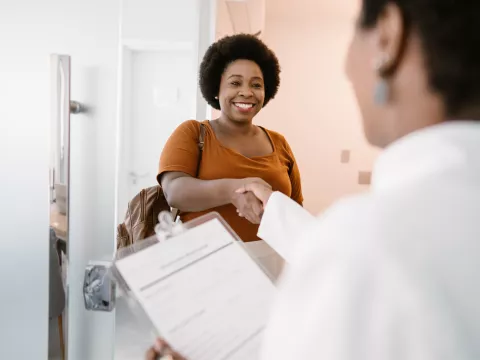- AdventHealth

Choose the health content that’s right for you, and get it delivered right in your inbox.
It can seem like modern life puts a bullseye on the lower back. Thanks in part to largely sedentary lifestyles, lower back injuries are the most common cause of pain among Americans, with about four in five Americans experiencing lower back pain at some point in their lives. AdventHealth experts say too much sitting is often part of the problem.
Moving Matters for Spine Health
Every single human body needs to walk, bend and rotate. It doesn't matter if you're an Olympic athlete or a great grandmother. You need to move.
To see why inactivity is a problem, imagine the spine as a bridge. Your muscles, tendons and ligaments are like the guidewires that keep your bridge upright. Just as muscles strengthen when used, they also weaken when ignored.
So many of us are sitting at a computer all day long. If you're sitting in a poor posture and an unsupportive chair, your muscles adapt, getting tight and weak. The result, then, whether you're going for a run or just bending over to tie your shoes, is often lower back injury — usually in the form of a strain or a sprain.
Back Pain is Getting Worse
In one study, the occurrence of serious lower back pain more than doubled in a 14-year span. During that time, the prescription of opioid medications and injections also rose dramatically. AdventHealth physical therapists suggest an alternative.
The expert physical therapists at AdventHealth will work with you to diagnose what may be wrong mechanically. Medication can mask pain, but it won't correct the underlying problem. That's the essence of what physical therapy does — it helps people understand and respect pain but also treat it, as well.
Adjusting Everyday Activities for Less Back Pain
Promoting the strength and flexibility of the two largest muscles in the body — the latissimus dorsi and gluteus maximus — goes a long way toward promoting spine health.
To prevent lower back injury, the following tips can strengthen the guidewires of your spine:
- Use a standing desk — it'll engage your muscles, improve circulation and allow your body to actively hold you upright
- Take a walk — even if it's only for a few minutes, sitting at a desk for hours at a time can lead to injury
- Avoid text neck — hold your smartphone up rather than letting your neck hang down
- Don't stretch cold — get your body temperature up, then prepare your spine to move in a full arc of motion
For those with pain, rest is often a poor prescription. Twenty years ago, it was common advice. Now, however, it's not the standard best practice. Instead, try to continue your normal activities.
Build Body Awareness
Be aware of your body. Are your muscles being activated or surrendering to gravity? For most people, this awareness doesn’t come naturally.
For many of us, our awareness of posture is limited to occasionally sitting up straight at a desk before unconsciously slouching back down minutes later. Our brains are so busy with other things, experts say, that little mental energy is left over for body awareness. Meditation, relaxation and stretching can be wonderful ways to build awareness of your body and how it moves.
Take Action to Fight Back Pain
Consult with an Orthopedic Specialist about your posture and back pain. The AdventHealth team includes expertise from across the many disciplines it takes to support a more whole you. Click here to find more information on orthopedic specialist options available to you.




